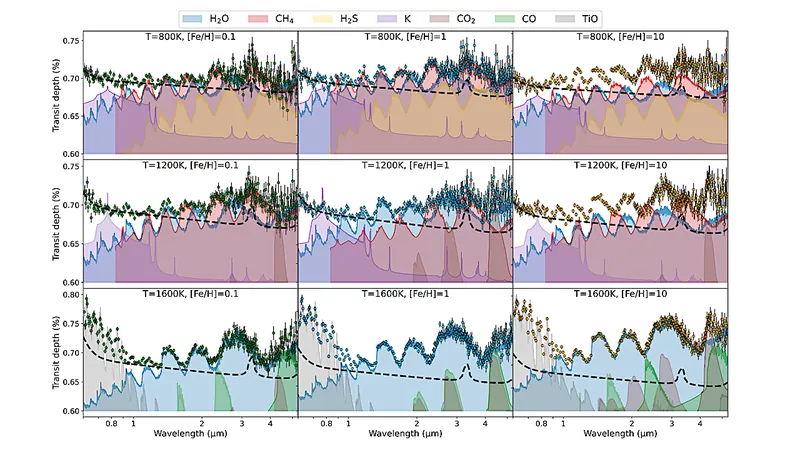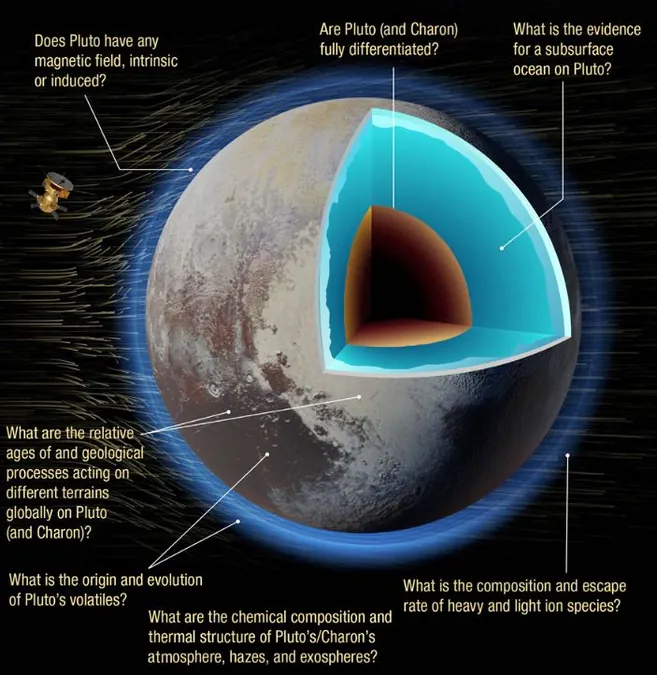
Unveiling the Cosmic Secrets: Can We Detect Polycyclic Aromatic Hydrocarbons on Exoplanets?
2024-11-15
Author: Arjun
Introduction
In an exciting new study, researchers have ventured into the fascinating realm of exoplanet atmospheres, focusing on the elusive polycyclic aromatic hydrocarbons (PAHs). These complex organic molecules, found in various cosmic environments including interstellar space, hold clues to the chemical processes that might sustain life beyond Earth.
Research Objectives
The study set out with an ambitious goal: to determine the minimum detectable mass fractions of PAHs across various planetary conditions, establishing which planets could be prime candidates for future observations.
Methodology
To achieve this, the team harnessed the power of the one-dimensional self-consistent model known as petitCODE, in conjunction with petitRADTRANS, a sophisticated radiative transfer model that simulates the transmission spectra of these distant worlds.
Observations and Analysis
Using the cutting-edge NIRSpec PRISM instrument aboard the James Webb Space Telescope (JWST), the researchers analyzed how the unique atmospheric conditions of different exoplanets affect the detectability of PAHs. A Bayesian approach was taken with the aid of the MULTINEST code, allowing for a robust statistical analysis of the data collected.
Findings
Their findings were groundbreaking: variations in carbon-to-oxygen (C/O) ratios coupled with planetary temperatures were found to profoundly impact the transmission spectra, directly influencing PAH detectability. Notably, planets exhibiting metallicities of [Fe/H]=0 and 1, along with C/O ratios of 0.55 and temperatures near 1200 K, emerged as the most favorable environments for PAH detection.
Interestingly, detectable mass fractions could be as low as 10⁻⁷, equivalent to just one-thousandth of the abundance levels typically found in interstellar medium (ISM). Moreover, colder planets characterized by lower metallicities and C/O ratios, in addition to hotter, carbon-rich planets, showed potential for detecting PAHs at concentrations around 10⁻⁶. This highlights the diverse environments where organic molecules might thrive, potentially hinting at the chemical precursors needed for life.
Implications
These substantial insights significantly refine the approach scientists take when selecting targets for future investigations into exoplanetary atmospheres. The implications of confirming PAHs in exoplanet atmospheres are particularly thrilling, suggesting that we might be one step closer to understanding the origins of life outside our solar system.
Conclusion
As we look to the stars, the quest to uncover the mysteries of exoplanets continues with this vital research paving the way for upcoming astronomical explorations. The hunt for life beyond Earth is on, and the skies have never been more promising!




 Brasil (PT)
Brasil (PT)
 Canada (EN)
Canada (EN)
 Chile (ES)
Chile (ES)
 España (ES)
España (ES)
 France (FR)
France (FR)
 Hong Kong (EN)
Hong Kong (EN)
 Italia (IT)
Italia (IT)
 日本 (JA)
日本 (JA)
 Magyarország (HU)
Magyarország (HU)
 Norge (NO)
Norge (NO)
 Polska (PL)
Polska (PL)
 Schweiz (DE)
Schweiz (DE)
 Singapore (EN)
Singapore (EN)
 Sverige (SV)
Sverige (SV)
 Suomi (FI)
Suomi (FI)
 Türkiye (TR)
Türkiye (TR)